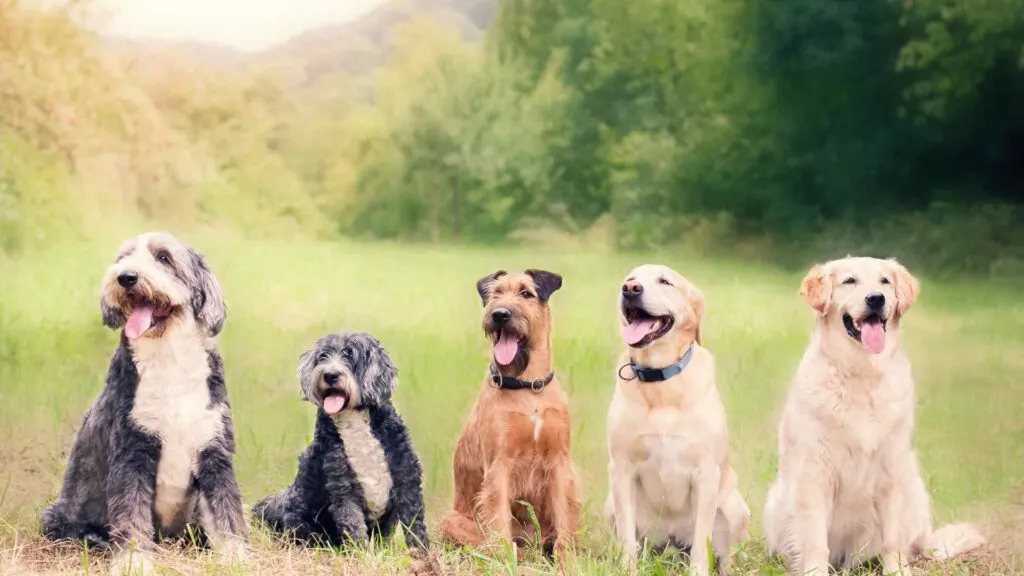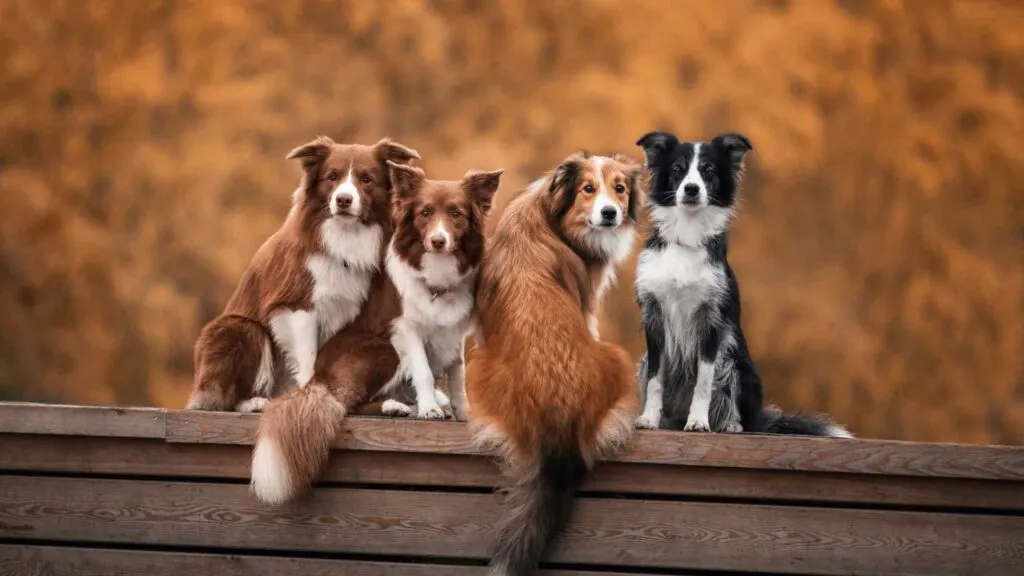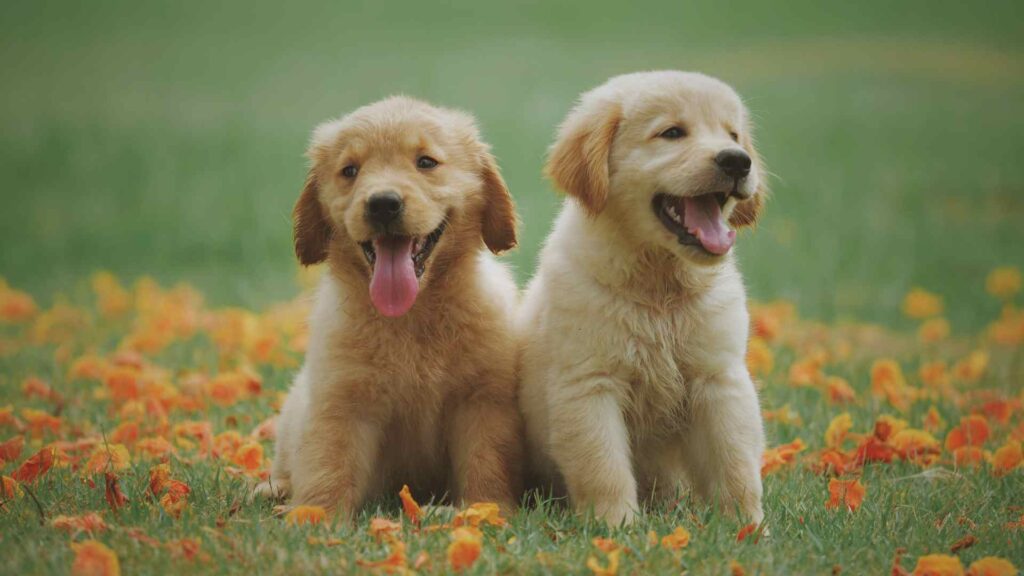Dogs have been by our side for thousands of years, bringing endless joy, loyalty, and yes—plenty of surprises!
In this ultimate guide, dive into 145 fun facts about dogs that showcase everything from their amazing abilities to their quirky habits.
Whether you’re a dog lover or simply curious, get ready for a paw-some time!
The Amazing Senses of Dogs
- Dogs’ sense of smell is up to 100,000 times more powerful than humans.
- They have an extra scent organ called the vomeronasal organ, which detects pheromones.
- Dogs can see in low light thanks to a special membrane called the tapetum lucidum.
- They can hear four times farther than humans.
- Dogs’ noses are wet to help them smell better, as moisture captures scent particles.
- A dog’s nose print is unique, much like a human fingerprint.
- dog fun factsDogs have about 1,700 taste buds compared to 9,000 in humans.
- They have an acute sense of taste for meat but not as much for sweets.
- Dogs use their whiskers to detect changes in their environment.
- They can sense a storm or earthquake before it happens due to their heightened senses.
- Dogs can detect cancer and other illnesses through scent.
- Their hearing can pick up higher frequencies than humans can hear.
- Dogs perceive time differently and can recognize routines.
- Some dogs can detect when their owners are about to return home by sensing subtle changes.
- Dogs can recognize up to 250 words and gestures!

Canine Communication Secrets
- Dogs communicate largely through body language and facial expressions.
- They wag their tails to communicate emotion; a slow wag can mean relaxation.
- When dogs tilt their heads, they may be trying to better understand us.
- They bark differently to express various emotions like excitement or alertness.
- Dogs lick to communicate affection or respect.
- Eye contact with a dog releases oxytocin, the bonding hormone, for both dog and human.
- Raised hackles (hair on their back) show they’re feeling alert or agitated.
- Dogs may yawn to calm themselves or others around them.
- Tail wagging direction can indicate mood; a right-sided wag means happiness.
- Some dogs communicate through “play bowing” as an invitation to play.
- They often lean against people to show affection or seek comfort.
- Dogs’ “submissive grin” is their version of a smile, indicating friendliness.
- They use growling as a way to communicate frustration or discomfort.
- Dogs whine for attention, comfort, or to indicate that they need something.
- Puppies communicate with each other through high-pitched yips and gentle nips.

Historical and Cultural Dog Facts
- The first dog was domesticated over 14,000 years ago.
- Dogs have been worshipped in ancient cultures like Egypt, where Anubis was a canine god.
- The oldest known breed is the Saluki, dating back to ancient Egypt.
- Dogs were often buried alongside their owners in ancient civilizations.
- In the Middle Ages, dogs wore armor and served in battle.
- The ancient Romans used dogs for both hunting and companionship.
- The Akita Inu breed is a symbol of loyalty in Japan.
- Queen Victoria was known for popularizing the Pomeranian breed.
- The U.S. has over 89 million pet dogs, making it one of the most dog-loving nations.
- Siberian Huskies were critical in delivering medicine in the 1925 “Serum Run” to Nome, Alaska.
- The Basenji is a dog breed that doesn’t bark but yodels.
- Greyhounds were bred to be the fastest breed and have an ancient lineage.
- The Dalmatian is a traditional firehouse dog, thanks to its history with firefighters.
- Dogs were sent into space during the early space race, with Laika being the first.
- The Afghan Hound was a favorite of royalty due to its elegance and speed.

Fun Facts About Puppy Development
- Puppies are born blind, deaf, and unable to regulate their body temperature.
- They start developing senses within two weeks after birth.
- Puppies sleep up to 20 hours a day in their early weeks.
- By three weeks, puppies start to stand and play with their littermates.
- At four weeks, puppies can learn basic social skills from their mom and siblings.
- They start exploring their surroundings more after the fifth week.
- Puppies undergo an important socialization period from three to 16 weeks.
- Proper socialization at an early age helps puppies become well-rounded dogs.
- Puppies lose their baby teeth around 12-16 weeks.
- Puppies recognize their mother’s voice even before opening their eyes.
- They often “puppy pile” on each other for warmth and comfort.
- Puppy breath is caused by a special combination of bacteria and enzymes.
- They have a natural instinct to dig, which dates back to their ancestors.
- Puppies communicate with gentle mouthing and play fighting.
- Puppy tails curl to one side while sleeping for comfort.
Unique Dog Behaviors
- Dogs chase their tails out of curiosity, play, or even boredom.
- Many dogs like to roll in smelly things to mask their own scent.
- Some breeds, like Huskies, “talk” back to their owners with howls or murmurs.
- Dogs kick up dirt after going to the bathroom to mark their territory.
- Spinning in circles before lying down is a natural nesting instinct.
- Some dogs “herd” by gently nipping at people’s heels—especially herding breeds.
- They may paw at food bowls to “bury” them, mimicking wild behavior.
- Digging is an instinctual behavior, especially in breeds like Dachshunds.
- Dogs often wag their tails to the right when they’re happy.
- Some dogs tilt their heads to improve sightlines for listening.
- Dogs instinctively shake when they’re wet to dry off quickly.
- Some dogs will stare lovingly into your eyes as a way of bonding.
- Chewing and mouthing are natural stress relievers for dogs.
- “Scooting” their bottoms on the floor may mean they need their glands expressed.
- Dogs sometimes eat grass as a natural way to aid digestion.
Dog Puns for Every Occasion
- “What a re-bark-able day!”
- “Life’s just paw-some with dogs!”
- “Feeling fur-tunate to have my pup.”
- “Dogs are paws-itively the best.”
- “Our bond is un-fur-gettable.”
- “Every day is a paw-ty with dogs!”
- “Don’t stop retrievin’!”
- “I lab-rador my dog!”
- “Have a purr-fect day, with a dash of bark!”
- “Dogs make everything paw-sible.”
- “Barking up the right tree!”
- “Paws what you’re doing for a puppy break.”
- “Pup-peroni: not just a snack, but an attitude.”
- “My dog is pawsitively the best.”
- “You’re pup-tacular!”
- “Dogs are pawsome, any way you slice it.”
- “Pup-arazzi just can’t get enough!”
- “It’s the leashed I can do.”
- “Dog-gone it, I’m in love!”
- “Feeling howling good.”
- “This is paw-sitively exciting!”
- “Living the dog’s life.”
- “Hope you have a tail-waggin’ day!”
- “Going mutts over you!”
- “Chews to be happy!”
- “Love fur-ever!”
- “Dogs bring pure paw-sitivity.”
- “Always in the paw-sitive lane.”
- “Muzzle-tov to new puppy parents!”
- “Bark all day, wag all night.”
- “Doggie breath: puppy love in a puff.”
- “Dachshund through the snow.”
- “Can’t resist puppy eyes!”
- “Let’s raise the woof!”
- “Love you to the bark and back.”
- “A bone-a-fide friendship.”
- “I’m fur-ever grateful.”
- “The fur-rocious charm of dogs!”
- “Pawsing for a puppy moment.”
- “Pure-bred happiness!”
- “Bone appetit!”
- “Pup-date your life with a dog!”
- “No one can hold a candle to my canine.”
- “Woof it up!”
- “Having a howling good time.”
- “You’re dog-gone amazing!”
- “When life gets ruff, hug your dog.”
- “Shake paws and have a great day!”
- “It’s im-paws-ible not to love dogs.”
- “I’m mutts about dogs!”
